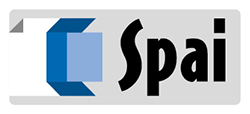Pharmaceutical validation: the importance of training and comparison
Pharmaceuticals sector, in particular those involved in validation processes, is a niche sector , where the few players on the scene tend to avoid confrontation and lack training opportunities. Our CEO Fabio Farneti recently took part in a training and discussion event on the subject of risk analysis, from which he reported interesting ideas..
What was the theme of the meeting?
“We were talking about risk analysis, but in the automotive sector”.
SPAI does not operate in the automotive sector
“In fact, but this is the interesting point, because I confronted with the sector that more than any other is the leader in risk analysis, and that has always adopted the FMEA (Failure Mode and Effect Analysis) method”.
What is it about?
“It is an inductive analytical method that was born in military field, then moved to the aerospace field and finally to the automotive one. For several years it has been a standard that has also been included in the URS for equipment whenever a GMP risk analysis is also required”.
Is it not good?
“The method itself is good indeed but it has to be contextualized in the field in which it is used. Times, ways and collaborations are not the same for all the sectors.
We do imagine that times are much longer, right?
“Of course, from the idea to the marketing, at least two years pass (in the 80s even 10 years), then the model remains on the market for a long time, maybe with some new version. Moreover, some models share parts of the structure or of the car body with each other, and even this allows a certain saving in scale. It should also not be forgotten that the number of products sold in the world is very high, so the costs of risk analysis with FMEA method are amortized. For companies that produce automatic machines, things are very different”.
So, comparing yourself to this system, what could you find interesting for the pharmaceutical sector?
As I said before, the automotive sector has always been a point of reference for all industrial sectors, this means that often, even in the automatic pharmaceutical machinery sector, we are required to carry out a risk analysis using the FMEA method, which makes no sense for a machine that will probably be a single piece or, at best, will be produced in very few samples. In addition, the design and production times for automatic machines in the pharmaceutical industry range from three to six months”.
The FMEA method is very rigorous, it analyses any risk and guarantees maximum security, why don’t you consider it suitable for a very sensitive sector, such as pharmaceuticals, beyond economic convenience?
“To better understand the problem, it would be necessary to go into the method, but to reach a full understanding of it we would require an entire interview. The method needs three fundamental elements to work well: a large amount of time, the use of recognized and shared indexes and finally the method must be used as a stable tool in the design process of the equipment and not occasionaly. All three factors in this area are not available”.
Then why do they keep asking for this method?
Let’s go back to a speech we have already made: habit? Laziness? Surely more cooperation and confrontation would be needed.”
So the comparison with those who work in the automotive industry has strengthened your thesis?
“Yes, and it has further convinced me that we have to confront each other as operators and that we never stop learning”.
Do you think there are few opportunities for training and comparison in this sector?
“Yes, everyone tends to work in their own context and with their own procedures. There is almost a sort of fear or protection of one’s professional space. Instead, the comparison could bring benefits for everyone in a sector, that of pharmaceutical validation, where there is ample margin for working more effectively”.





